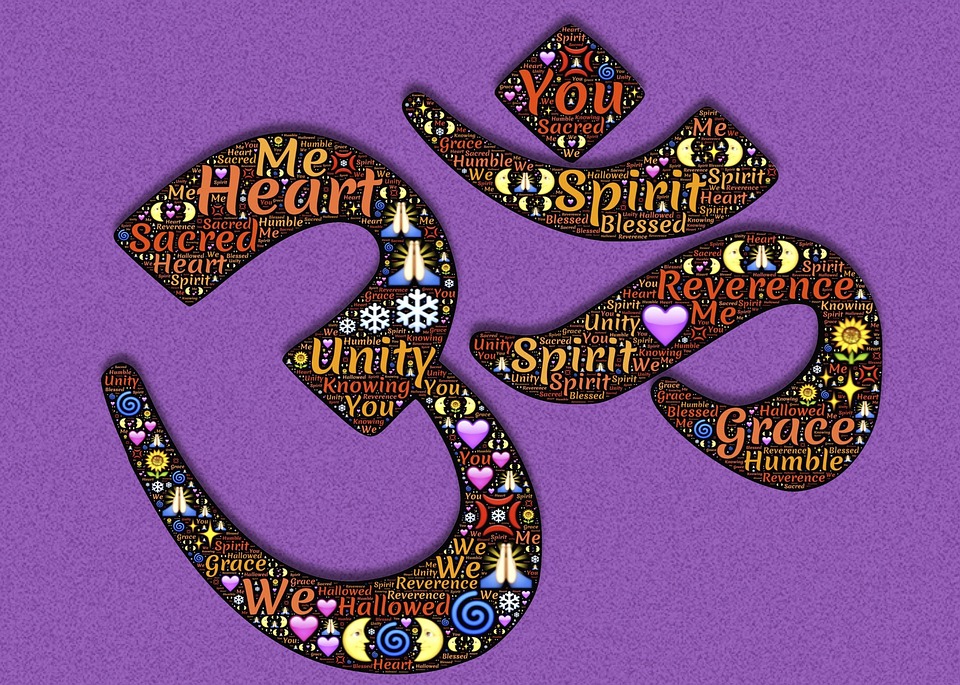If you are into yoga or pranayama or meditation, chances are you will already have been introduced to Om. It is a spiritual symbol in the Hindu religion and has significance as a sacred symbol. You might not know that it is also a chant or a mantra that is prevalent in other faiths like Buddhism, Sikhism, and Jainism. The curious curl that you are familiar with is actually om as written in Sanskrit. Especially in Hinduism, Om is seen as one of the foundational symbols. Often found in the beginning of all the holy scriptures in Hinduism, it is considered an invocation to a deity or deities before embarking on any artistic or literary work.
Spiritual Significance of Om or Aum
Seen as the primary symbol in Hinduism (also called Pranava), Om is seen as an incantation to divinity prior to beginning any task. Any sacred or religious task — like the reading of scriptures in a holy gathering, a celebratory event like a wedding, or a solemn rite of passage like death — will include the chanting of om as part of the ritual. Omkara (the chanting of om) is said to be the harbinger of divine energy. The symbol ![]() is in Devnagari script, the language of the gods.
is in Devnagari script, the language of the gods.
When a sage or a saint blows into a conch shell, the sound that emanates is supposed to be Om. Chanting of om is said to have cleansing powers, which explains the spirited incantation that accompanies any practice or ritual involving fire and water. You will have seen videos or images of people sitting around a roaring fire inside a pit, ladling ghee into the fire. The hypnotic power of such an image will almost always involve the incantatory crescendo of om reaching up along with the fire.
In modern times, primarily in yogic practice, om is a mainstay. Relaxation techniques and meditation techniques that accompany sessions of yoga will end with chanting of om at the end, while in the corpse pose, or even while sitting and meditating.
Breaking this single syllable into three letters of the alphabet will explain the significance of the utterance. The sound ‘ah’, the first letter of the trifecta, is chanted when in Shavasana or the corpse pose, when focusing on relaxing the lower body: hip downwards to the toes. When following the relaxation protocol of the corpse pose, the instructor or practitioner will draw your inner gaze towards your toes first, working upwards to the hips: toes, soles of your feet, ankles, shinbone, calves, knees and the knee joint, thighs (inner and outer), hips, and the pelvic area. Once you are done meditating on these body parts, you will be asked to draw a deep breath and exhale into a drawn out ‘aaaaah’, as far as your breath allows. This syllable is said to help the blood circulation improve to the lower half of the body.
The second letter is the sound ‘oooh’. This syllable focuses on the thorax and the abdomen of the human body, moving upwards towards the neck. From the stomach and the lower back, you focus your attention on the upper back, the chest area, shoulders, arms, and the neck. As this region relaxes, you repeat the procedure of inhaling and exhaling to a long utterance of ‘oooooh’. This syllable is said to have great benefits on the thoracic area.
Finally, as you come to the head, you focus primarily on the mind and the sense organs. The third letter completes the incantation. The bee sound that emanates from you at the end of the inhalation, “mmm”, helps blood circulate easily in the head, sending fresh blood to all the sense organs, hair, and cooling the top of the head in the process.
You will finally draw a deep breath and exhale into the collective “AUM”, starting with the ‘aah, moving on to the ‘ooh’ and ending with the ‘mmm’ sonorants in order. What this does essentially is fill your lungs with clean air, the oxygen in which is carried to the different parts of the body via blood. This explains the tingling sensation and the micro vibrations you sense in your body prior to coming out of your trance-like state.
Recent research in fact proves this fact. The next time someone asks what exactly is the deal with Om, lead them here. The three sounds essentially represent the states of consciousness: wakefulness, dream, and sleep. You are manifesting the divine in you with this simple incantation.

